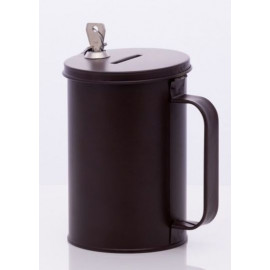No products
Product successfully added to your shopping cart
There are 0 items in your cart. There is 1 item in your cart.
Offering Baskets
- Altar Bell and Gong
- Candle Snuffer
- Candlestick
- Catholic Pyx
- Chalices
- Church wall lamps
- Ciborium
- Crosses and Crucifix
- Cruets & Trays
- Holy Water Font
- Holy Water Pot
- Missal Stand
- Monstrance Tabor
- Monstrances
- Offering Baskets
- Oil Stock
- Patens
- Reliquaries
- Sanctuary Bells
- Sanctuary Lamp
- Sprinkler
- Thurible, Boat, & Spoon
- Travel Liturgy & Mass Kit
Offering baskets are containers used in churches to collect donations from the congregation during the offertory portion of the service. They are typically made of materials such as wicker, metal, or plastic and may be decorated with intricate designs or engravings. Some offering baskets come with a removable liner that can be easily cleaned or replaced. Offering baskets are an important part of church services, as they allow the congregation to contribute financially to the church and its ministries. They are often passed around by ushers or placed at the front of the church for people to place their donations in.
Offering baskets are containers used in churches to collect donations from the congregation during the offertory portion of the service. They are typically made of materials such as wicker, metal, or plastic and may be decorated with intricate designs or engravings. Some offering baskets come with a removable liner that can be easily cleaned or replaced. Offering baskets are an important part of church services, as they allow the congregation to contribute financially to the church and its ministries. They are often passed around by ushers or placed at the front of the church for people to place their donations in.
Offering Baskets There is 1 product.
The Evolution of Church Offering Baskets
Church offering baskets have been a staple in religious gatherings for centuries, symbolizing the act of giving and the communal support of the church's mission. These baskets, whether they're woven wicker or polished brass, carry more than just monetary donations; they carry the goodwill and faith of a congregation. Let's dive into the fascinating world of church offering baskets, exploring their significance, evolution, and the modern-day challenges they face.
The Significance of Offering Baskets
The act of passing around an offering basket during worship services is a ritual steeped in meaning. It's not just about the financial aspect; it's a physical manifestation of the congregation's devotion and commitment to their faith and community. This tradition underscores the idea of sacrifice and sharing, reminding us that what we give is a reflection of our gratitude and responsibility towards our community.
A Journey Through Time: The Evolution of Offering Baskets
Historically, the design and material of church offering baskets have varied widely, reflecting the culture and resources of the congregation. From simple clay pots in early Christian gatherings to the elaborate silver plates of the Victorian era, each iteration of the offering basket tells a story of the times. Despite these changes, the core purpose of these baskets has remained constant: to collect the offerings of the faithful.
Modern Challenges and Innovations
Lately, the traditional church offering basket has faced challenges from the digital revolution. With the rise of online giving and electronic transactions, the physical act of passing a basket has diminished in some congregations. However, this shift has also sparked innovation, with churches finding new ways to incorporate the act of giving into their services, such as special offerings for global crises or community projects.
The Role of Offering Baskets in Worship Etiquette
Offering baskets also play a crucial role in worship etiquette, serving as a gentle reminder of the importance of giving. They encourage participation from all members of the congregation, regardless of the size of their contribution. This act of passing the basket fosters a sense of unity and shared purpose, reinforcing the communal aspect of worship.
FAQs: Everything You Wanted to Know About Church Offering Baskets
Q: Can I still participate in the offering if I give online?
A: Absolutely! Many churches provide cards or tokens that online givers can place in the basket, symbolizing their contribution.
Q: What happens to the money collected in offering baskets?
A: The funds are typically used to support the church's operations, missions, and community outreach programs. Each church may allocate these funds differently based on their priorities and needs.
Q: Are there alternatives to traditional offering baskets?
A: Yes, some churches use offering boxes placed at the entrance or exit, while others have adopted digital platforms for giving. The method may vary, but the spirit of generosity remains the same.
Q: How can I encourage my children to participate in the offering?
A: Many parents give their children small amounts to contribute, teaching them the value of giving from a young age. Some churches also have special children's offerings to engage the younger members of the congregation.
In Conclusion
Church offering baskets are more than just receptacles for donations; they are symbols of faith, community, and generosity. As we navigate the challenges of the modern world, the essence of what these baskets represent remains unchanged. Whether through a woven basket passed down the pew or a digital transaction made in silence, the act of giving continues to be a powerful expression of our collective commitment to the greater good.

